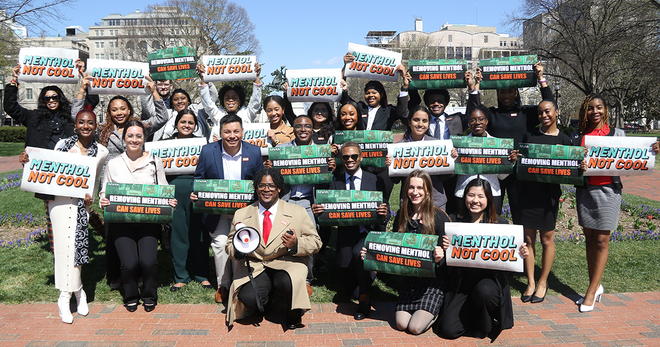Big Tobacco forced to tell the truth with TV and print ads
The tobacco industry is finally being forced to tell the truth about the deadly and harmful effects of cigarettes.
Eleven years after a federal judge found that the tobacco industry violated civil racketeering laws — meaning they systematically defrauded the American people — tobacco companies are being forced to run court-ordered TV and newspaper ads about how they manipulated cigarettes and lied. Four tobacco companies—Altria, R.J. Reynolds Tobacco, Lorillard and Philip Morris USA—are running the ads starting Nov. 26.
The tobacco companies “have marketed and sold their lethal products with zeal, with deception, with a single-minded focus on their financial success, and without regard for the human tragedy or social costs that success exacted,” wrote U.S. District Judge Gladys Kessler in her 1,683-page opinion for the 2006 court decision.
Big Tobacco has spent the past 11 years fighting to weaken the language of the ads. During this delay, more than 5 million people have died from tobacco, still the leading cause of preventable death and disease in the United States.
What lies are the statements correcting?
By court order, the topics of these statements will include: the adverse health effects of smoking; the addictiveness of smoking and nicotine; the lack of significant health benefit from smoking “low tar,” “light,” “ultra light,” “mild” and “natural” cigarettes; the manipulation of cigarette design and composition to ensure optimum nicotine delivery and the adverse health effects of exposure to secondhand smoke.
Here are just a few of the statements they are being forced to include in the ads:
- More people die every year from smoking than from murder, AIDS, suicide, drugs, car crashes, and alcohol, combined.
- Cigarette companies intentionally designed cigarettes with enough nicotine to create and sustain addiction.
- All cigarettes cause cancer, lung disease, heart attacks, and premature death – lights, low tar, ultra lights, and naturals. There is no safe cigarette.
- When you smoke, the nicotine actually changes the brain – that’s why quitting is so hard.
- Secondhand smoke kills over 38,000 Americans each year.
Where will the statements appear and who will see them?
The four companies are required to disseminate the corrective statements through newspapers, television, cigarette package inserts and corporate websites. These corrective statements will appear in major newspapers and on TV networks during prime-time television.
The media landscape has changed dramatically since 2006, the time of the original court ruling. With the growth of digital and social media, few young people — or “replacement smokers” as the tobacco industry has called them—watch traditional TV channels or read print newspapers. In fact, only 5 percent of 15- to 24-year-olds watch the three major networks’ shows in prime time. This is an especially important age group because 99 percent of smokers start smoking before age 26.
Few Americans are aware of this court case and the requirement to tell the truth. A study by the Oklahoma Research Center found that only 23.1 percent of Americans know the tobacco companies were found to have violated the racketeering laws and only 32.1 percent know they committed fraud.
Big Tobacco spends nearly $1 million every hour to market tobacco.
While the corrective statements are an important step in telling Americans the truth about the dangers of cigarettes, the amount the tobacco companies must pay to place these ads is miniscule compared to the billions they spend on marketing their deadly products.
The Federal Trade Commission reports that marketing spending for cigarettes actually increased from 2014 to 2015 — from $8.03 billion to $8.24 billion. That’s nearly $1 million spent every hour to market tobacco products.
“What is needed is corrective action, not corrective statements,” said Robin Koval, CEO and President of Truth Initiative. “If the tobacco companies really wanted to make a difference, they would stop fighting tobacco control efforts that are proven to reduce consumption, including graphic warnings on packaging, menthol bans and higher taxes on tobacco products and better yet, they should stop selling a product that kills half of its users.”
More in tobacco prevention efforts
Want support quitting? Join EX Program
By clicking JOIN, you agree to the Terms, Text Message Terms and Privacy Policy.
Msg&Data rates may apply; msgs are automated.



